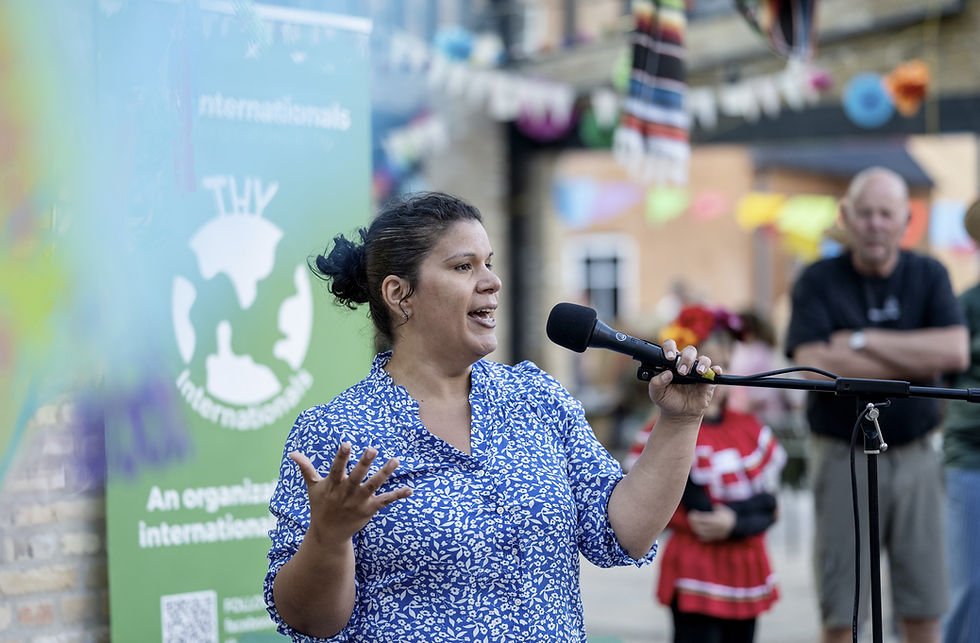Air to water heating technology
- The International
- May 5, 2020
- 3 min read

A sustainable fossil fuel alternative!
Photographs: iStock
Text: Mariano Anthony Davies
Where District Heating is not available, many Danish property owners have chosen air to water heating technology as an alternative to fossil fuel heating systems.
The ingenuity of an “air-to-water heat pump“ lies in the fact that it makes use of renewable solar energy in outdoor air and transfers it to the waterborne heating system in the property. The heating process begins in the heat pump's outdoor unit, which is placed outside the house.
Heat pump water heaters are a perfect example of efficient and renewable energy solutions for domestic hot water supply. The heat pump water heater consists of a heat pump which captures renewable and clean energy contained in air as an energy source to heat water.
How does it work? Heat pump water heating systems are solutions where the domestic hot water is heated by an integrated heat pump.
The heat pump water heater uses the operational principle of a heat pump by absorbing calories in outdoor air and using this energy to ensure water heating. The fan (1) inhales ambient air transferring its energy to the refrigerant agent in the evaporator (2), thus changing from liquid to gas. The gas is further heated by compression (3). In the condenser (4), the gas transfers its accumulated heat to the water tank. As it gets colder, it transforms back to fluid. The pressure of the fluid is further reduced by the expansion valve (5). The electric back-up heating (6) starts only when required during insufficient heat pump working conditions.
"Globally, the smart grid is seen as an essential part of the low carbon transition of the energy system."
A compressor pumps the refrigerant between two heat exchanger coils. In one coil, the refrigerant is evaporated at low pressure and absorbs heat from its surroundings. Since the ground and air outside always contain some heat, a heat pump can supply heat to a house even on cold winter days.
Does this technology have any limitations?
Air-to-air heat pumps do have their limitations when it comes to heating large areas. The colder the outside air, the less heat each pound of refrigerant picks up as it circulates through the system. Heating capacity, as well as efficiency, decreases as outdoor temperatures fall. This inescapable constraint of thermodynamics often requires air-source heat pumps to be equipped with supplemental heat sources to handle peak loads in cold northern climates. If electric resistance elements provide that supplemental heat, the overall efficiency of the system can be reduced substantially. Air-to-air heat pumps also require a defrost cycle to remove frost from the outdoor heat exchanger during cold weather. Hot refrigerant gas is periodically recirculated in the outdoor coil to melt the frost. The energy used to defrost also lowers overall system efficiency.
Globally, the smart grid is seen as an essential part of the low carbon transition of the energy system. In Denmark, this transition mainly entails integrating more wind power into the system and using electricity for heating (heat pumps) and transport (electric cars). Therefore, residential heat pumps are considered essential infrastructure technologies in the smart grid because they are ideal for the flexible consumption of an increasing amount of intermittent wind power and are well-suited to delivering system balance services.
In Denmark, interest in heat pumps has resulted in increased research into how flexible heat pumps are regarding energy consumption. In recent years, many R&D projects have been launched that investigate various aspects of their smart grid readiness and flexibility potential.
If the definition of the heat pump is so intimately linked to the energy system to which it is a part, there is perhaps a danger in it being linked too firmly to its ability to elicit flexible electricity consumption from individual households. What is the competition, for instance, from individual pellet burners? Or from natural gas and district heating systems where heat pumps function only as a supplement? Indeed, whether flexible electricity consumption from households really presents any real flexibility advantage in the bigger picture is being increasingly debated, and some argue that the heat pump should rather play a central role as large units in district heating systems. Nevertheless, the Danish Energy Association stated in 2010 that it expects 300.000 heat pumps to be installed in Danish homes by 2025 and oil burners to be completely phased out by 2030.









